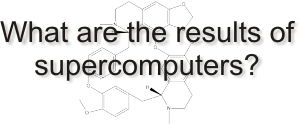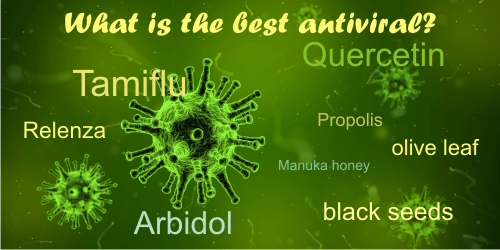I remember that at the beginning of this pandemic, the news were flooding us with assurances that the world’s biggest computer was running a program that would tell us the cure for Covid-19. In the era of smart phones, virtual reality, nanotech, and other SF things we clearly never heard of, the above statement made sense.
So, how come 5 months after the pandemic started we are still trying available drugs to see which ones work? What were the results?
Here is what they have stated about these results: “These are preliminary reports that have not been peer-reviewed. They should not be regarded as conclusive, guide clinical practice/health-related behavior, or be reported in news media as established information”.
1. The IBM Summit supercomputer
At the beginning of March, the US Department of Energy has announced that the Summit supercomputer, by The University of Tennessee, Knoxville & Oak Ridge National Laboratory, will be used to attempt to find a treatment or cure for Covid-19.
For those that understand, here is what Summit is: A 10MW machine built with 4,608 processing nodes. Each node contains 2x Power9 CPUs at 3.07GHz and six Nvidia Volta V100 GPUs. It’s the fastest supercomputer on Earth, with a demonstrated performance of 148.6 petaFLOPS in Linpack and peak performance of over 200 petaFLOPS. This means it has the computing speed of 200 quadrillion calculations per second, 1 million times more powerful than the fastest laptop. What normal computers would do in years, Summit does in days.
“It’s composed of what we call nodes. Each node is itself a self contained computer and there are 4600 of those. And each of those nodes is equipped with a couple of IBM Power Nine processors, and in turn, each of those are attached to three NVIDIA GPUs each. So you total you have roughly 25,000 NVIDIA GPUs. You have a little more than 9000 Power Nine microprocessors, and these are configured in cabinets that are substantial number, and they cover a fair amount of states. And you’re not talking football field or anything like that. I think of that more perhaps the size of a tennis court.” Dave Turek, vice president for technical computing at IBM Cognitive Systems.
And the world’s most powerful supercomputer has identified some compounds that may effectively combat the virus. It screened more that 8000 synthetic and natural drug compounds, to find those most likely to bind to the main spike protein of the virus. Why? If a drug binds to the spike protein, it may block the virus from entering the human cells.
The supercomputer ran simulations of over 8,000 compounds that could bind to the spike protein of the virus, which could limit its ability to spread to host cells. Summit identified 77 of them and ranked them based on how likely they were to bind to the spike.
• Micholas Dean Smith and Jeremy C. Smith, from Center for Molecular Biophysics, The University of Tennessee/Oak Ridge National Laboratory, published some results in their study “Repurposing Therapeutics for COVID-19: Supercomputer-Based Docking to the SARS-CoV-2 Viral Spike Protein and Viral Spike Protein-Human ACE2 Interface“, published in chemrxiv.org on 11th of March 2020.
Starting from the idea that the development of novel drugs takes years, with trials and regulatory approval taking between 10 to 15 years in the US (on average), it would be of great benefit to identify and repurpose already well characterized small-molecules, such as metabolites, illicit drug compounds, natural products, and previously approved drugs, for use in combating the virus.
The researchers performed 2 sets of docking calculations, and their work indicated that at least 7 compounds identified in this study would be reasonable initial compounds for experimental investigations in limiting SARS-CoV-2’s virus-host interactions.
1. 47 ligands were found to form Sprotein:ACE2 interface-ligand binding complexes with scores equal to or better than the score threshold (Vina score better and -7 kcal/mol), and of these, 41 are reported (as noted in the ZINC15 database40) to be available for purchase, with 21 denoted as having regulatory approvals.
Of the top 41 ranked compounds, the researchers highlight 4 (with scores ranging from -7.4 to – 7.1) based on their poses. These highlighted compounds are
· pemirolast – an anti-allergy medication for use in treating chronic asthma;
· isoniazid pyruvate – a metabolite of the tuberculous antibiotic Isoniazid;
· nitrofurantoin – antibiotic for use against urinary tract infections;
· eriodictyol – a flavanone found in Herba Santa, a traditional herbal remedy used for asthma and treating colds.
• The natural product: quercetol (quercitin) was at the 5th position (with a -7.3 score). A study done in 2004 already “identified two small molecules that bind avidly to the SARS S2 protein and can interfere with the entry of SARS-CoV into Vero E6 cells, with potent antiviral activities against wild-type SARS-CoV with EC50 values of 4.5 and 10.6 μM. Assays with the HIV-luc/SARS pseudotyped virus showed that quercetin also had antiviral activity against HIV-luc/SARS, with an EC50 of 83.4 μM. The cytotoxicity of quercetin was very low, with a CC50 of 3.32 mM. As an FDA-approved drug ingredient, quercetin offers great promise as a potential drug in the clinical treatment of SARS.” (study)
This is a natural product. It’s cheap and has no side effects. Read more about it here: How to fight flu naturally.
Further, the second through fourth top hits had 3 to 6 more ligand-residue interactions.
2. Docking results for the isolated virus S-protein host recognition domain show a total of 30 ligands. However, of these 30, only 3 were annotated in the ZINC15 database to have regulatory data from the US FDA or similar agencies in other countries.
The 3 top scoring ligands (with ZINC15 annotations denoting regulatory data available) for the isolated S-protein were: Cepharanthine, Ergoloid, and Hypericin.
Cepharanthine and Hypericin are both natural products with both having been the subject of multiple studies on their ability to act as antiviral agents (including against coronaviruses), while Ergoloid is an FDA approved drug component of interest in dementia therapies.
Cepharanthine: a naturally occurring alkaloid extracted from the plant Stephania cepharantha Hayata, with anti-inflammatory, antiallergic, immunomo- modulatory and antineoplastic effects. This drug is used in Japan since the 1950s to treat a number of acute and chronic diseases, including treatment of leukopenia, snake bites, xerostomia and alopecia.
Today it has been shown effective against HTLV (human T-cell leukemia-lymphoma virus) in lab research. Additionally, it has successfully been used to treat a diverse range of medical conditions, including radiation-induced leukopenia, idiopathic thrombocytopenic purpura, alopecia areata, alopecia pityrodes, venomous snakebites, xerostomia, sarcoidosis, refractory anemia and various cancer-related conditions. No safety issues have been observed with CEP, and side effects are very rarely reported. (!!!)
· On 15 April 2020, a study was published on biorxiv.org. The HIV protease inhibitor Nelfinavir and the anti-inflammatory drug Cepharanthine showed synergistic antiviral activity, and compared to many current drug candidates, these agents offer a promising new 218 multidrug treatment to combat COVID-19.
Why don’t we hear anything about this treatment?
Hypericin: one of the principal active constituents in the yellow flower of Hypericum perforatum (St. John’s wort). It has antidepressant, potential antiviral, antineoplastic and immunostimulating activities. Hypericin appears to inhibit the neuronal uptake of serotonin, norepinephrine, dopamine, gamma-amino butyric acid (GABA) and L-glutamate, which may contribute to its antidepressant effect. It may also prevent the replication of encapsulated viruses probably due to inhibition of the assembly and shedding of virus particles in infected cells.
Its downside is that it also exerts potent phototoxic effects by triggering apoptotic signaling that results in formation of reactive oxygen species (it is probably the most powerful photosensitiser found in nature, according to a study from sciencedirect.com).
My question: How come we don’t hear about treatments or clinical trials with these products and President Trump insists on hydroxychloroquine, which was proved in so many clinical trials to be ineffective and quite dangerous?
2. MOGON II Supercomputer
One of the most powerful computers in the world, MOGON II is operated by Johannes Gutenberg University (JGU) and the Helmholtz Institute Mainz. The JGU researchers published their paper recently on the World Health Organization (WHO) website, explaining that they had simulated the way 42,000 different substances listed in open databases bind to certain proteins of SARS-CoV-2 and thereby inhibit the penetration of the virus into the human body or its multiplication. The results were published on 5th of May, 2020, on sciencedaily.com.
Using the MOGON II supercomputer, the reseachers made more than 30 billion single calculations within two months and found that compounds from the four hepatitis C drugs simeprevir, paritaprevir, grazoprevir and velpatasvir have a high affinity to bind SARS-CoV-2 very strongly and may therefore be able to prevent infection.
These drugs work supported by the fact that both SARS-CoV-2 and the hepatitis C virus are a virus of the same type, a so-called single-stranded RNA virus.
According to the researchers, a natural substance from the Japanese honeysuckle (Lonicera japonica), which has been used in Asia against various other diseases for some time now, might be another strong candidate against SARS-CoV-2. “Our research results now need to be checked in laboratory experiments and clinical studies,” said Efferth and added that molecular docking had already been used successfully in the search for active substances against the coronaviruses MERS-CoV and SARS-CoV.
Again, have you heard of one of these substances being used in a trial?
Other references:
Early research on existing drug compounds via supercomputing could combat coronavirus ;
Extremetech.com;
Inside the supercomputer being used in the fight against coronavirus, federalnewsnetwork;
https://www.biorxiv.org/content/10.1101/2020.04.14.039925v1




